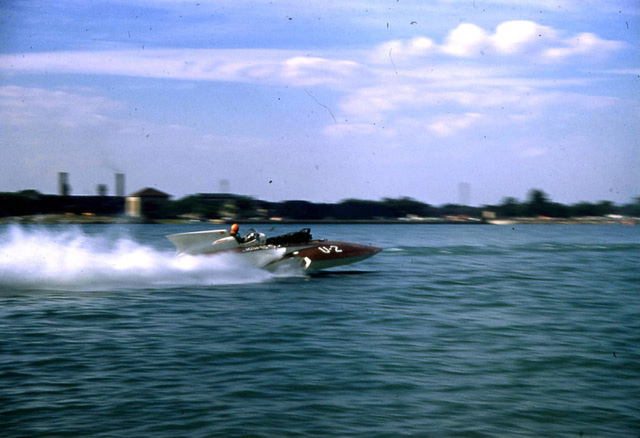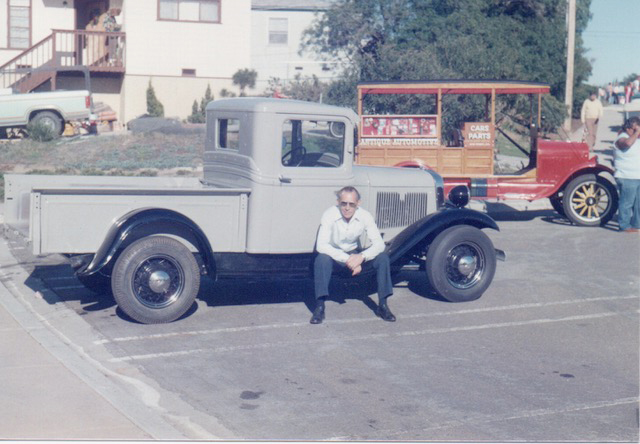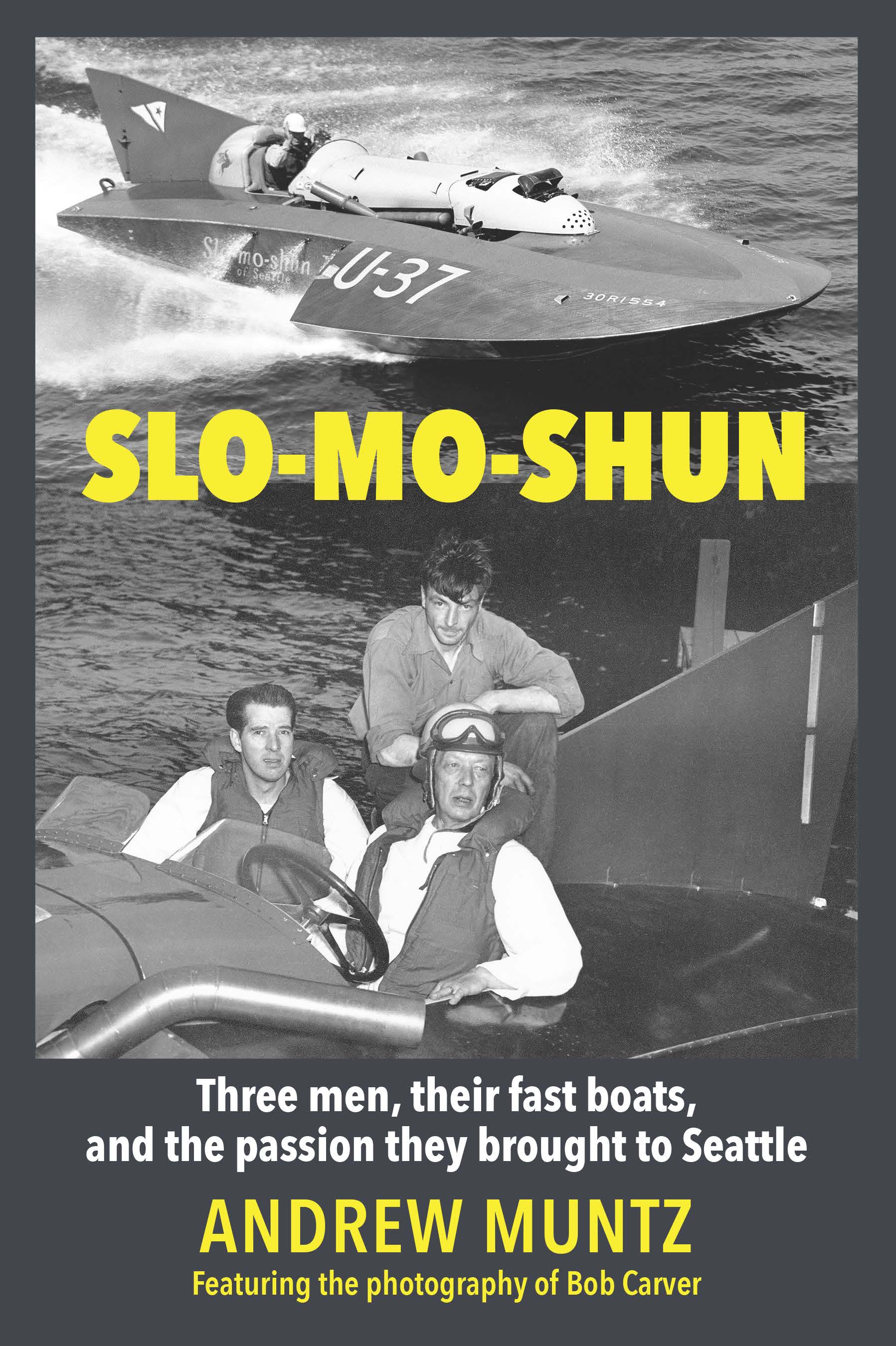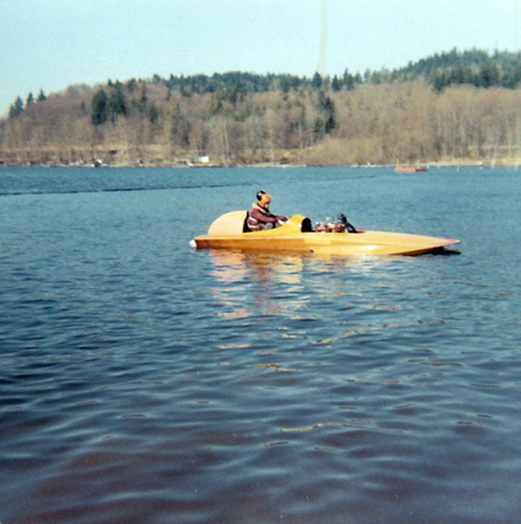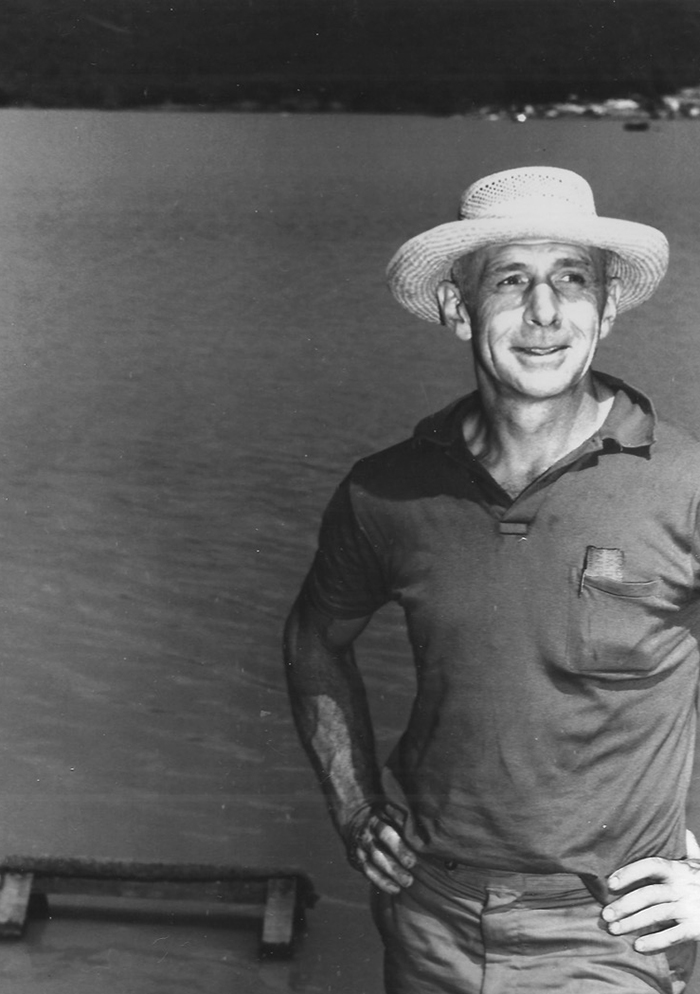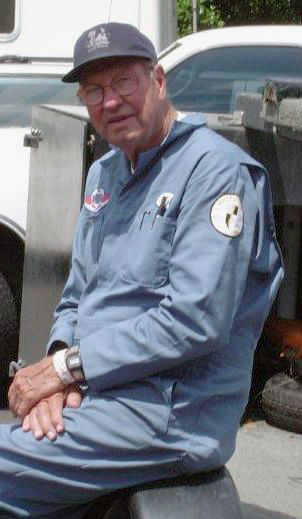Paul Wearly Part 2
May 3, 2024 - 8:33pm

Paul Wearly looking at Walls’ PRs, enjoying the regatta rush.
by Jay Walls
Back in the day, a speedboat was unheard of. Just think—in 1925 there was no outboard motor sold that could plane a boat. On top of that, most all the boats back then were wineglass transom rowboats or boats that displaced water like a canoe.
In 1926 the Johnson Company put out a 6 HP motor that had enough power to plane a boat. At that point boat builders had to widen the transom area of their boats so that they would safely plane off.
In 1928 the Elto Company headed by Ole Evinrude came out with the first 4-cylinder motor, and recorded speeds approaching 40 MPH. In 1929 speeds gained about 10 MPH; and in 1930, 10 more, so race boats were now approaching 60 MPH. In 1930 cars at the Indy 500 race had just cracked the 100- MPH barrier. The Depression was on and if people could find something to do for free, that’s what fit the bill. Fans came in droves to a local boat race, on horseback and driving their model Ts. They wanted to see a man in a small race boat go faster than the model T would go, and on top of that, do it on water. Boat racers were as famous back then as Indy drivers are today. Imagine going to a race and seeing speed like your eyes had never seen, and hearing noise like your ears had never heard. Paul Wearly and his boats were part of that story.
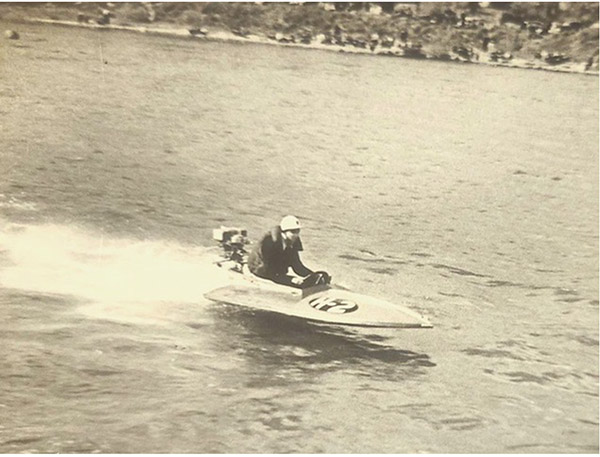
Paul Wearly in his “A” hydro with KR engine

Paul adjusting in the pits

Paul and Joe Wearly

The Wearly Trailer
I met Paul Wearly and talked with him after he had reached the age of 90. I went to his house and met him and his wife Evelyn. I took my race boat trailer with 3 PRs and 3 C Service Speeditwins. We had just been to a race, so the trailer was still loaded. Paul wanted to come out in the driveway to see my stuff; I wanted to let him look through my props hoping he would see something good that I had missed. I opened the trailer door and Paul took a deep breath and said, “I miss that smell.” Of course, that was the smell of alcohol fuel with castor oil. I opened the large prop box in the trailer. It held about 40 propellers. Paul looked in the box and felt a couple of them, then turned to me and asked, “Where are your good ones?” We shared a laugh about what I thought were good props. Paul explained that he was the guy that started cupping blades and running the props higher. I didn’t know he had such expert knowledge of prop design.

Paul Wearly discussing prop technology with Jay & J.J. Walls
I asked Paul how he was able to consistently win, when back in his racing days, anyone could go to a Johnson or Evinrude dealer and buy a new racing motor. He told me he always had a better engine in the trailer. Paul tested a lot, and would get one engine really running well and put it in the trailer. Then he’d start on a second engine. When he got it running well, it would go in the trailer too. Paul said what he actually competed with was always his third best engine. If something broke, he would go to the trailer and get the second-best engine and run it. He very seldom ran his best stuff. The engines he had were always for sale. He knew he could build a better one, so everything could be sold.
Paul felt that he always had an advantage, because his whole family worked on his equipment and their participation made Wearly racing what it was. The Wearlys all worked on the boats, motors, and props.
Engine-wise, after doing all the port work and fitting of parts, Paul (who lived in Muncie, Indiana) would get all his engine’s rotating components balanced both statically and dynamically at an Indianapolis company that specialized in IndyCar engines. Paul was more prepared than everyone else, and that’s what was needed to consistently win. On top of that, Paul was a great driver who was consistently where he needed to be to get out front. You can’t win with just a good prop; it takes everything—boat, motor, prop, driver—and even when you have all that, you still need luck on your side.
The Michiana Outboard Boating Chapter (MOB) of the Antique Outboard Motor Club set out to show Paul that he was admired and remembered for his achievements in racing. We dedicated one of the meets to him, and called it Paul Wearly Day. This was Roger Dykehouse’s idea. He, along with his friend and former racer Jack Gilbert, did a lot to arrange this meet, contacting the Wearly family to have everyone there. The date was September 18th, 2010, and Paul was 94 at the time. Paul’s daughter Cindy and son Sam came with him to the park in North Webster, Indiana, and we did our best to put on a show for Paul and his family. Roger Dykehouse had a speech prepared, along with a full posterboard of Paul’s racing achievements. It included Paul’s induction into the APBA Honor Squadron and the pivotal role he played in keeping the Indiana Outboard Association (IOA) going in its early years.
Jim Johnson and his son Duke came from Ohio, and brought a beautiful display of Neal race boats and other racing items. I asked Paul if he would like to take a ride with our hydro and PR. I really thought he would, since I had seen Stan McDonald take a ride at 93 in DePere, Wisconsin, in 1989. But Paul thought he had better not. Still, when we fired up the PR and made a flyby run, Paul got up out of his seat and smiled from ear to ear. Our Chapter President, Rick Eichrodt, presented Paul with a beautiful plaque commemorating our day at the park.
One of the greatest compliments ever to Paul’s racing came in the form of an interview with one of his competitors, Clint Ferguson, who had set many records and won many Nationals himself. Clint was asked who was the toughest competition he ever had to go up against. Without any hesitation, Clint said, “Paul Wearly was the best driver I ever competed against.”
As with everything, there must be a beginning and an end. Paul started racing in 1934 and ran his last Nationals in 1952. He won 21 National Championships along with setting many competition speed records, and even won the John Ward World Champion Trophy.
After all that winning, there was still one thing Paul wanted to do—to go faster, with an outboard, than anyone had ever gone. Paul spent the next two years building an “X” Class engine. It was based on the Evinrude 460, but also incorporated the Johnson rotor valve. Paul used all the knowledge acquired over his racing career, and cast iron technology from the 1930s, to set the 1955 straightaway “X” Class record of 85.106 MPH. This was the fastest anyone had ever gone with an outboard. Paul’s record endured until newer engine building techniques, like lightweight diecasting and larger cubic inch motors, punched speeds up to well over 100 MPH.
Paul E. Wearly, 96, passed away early Sunday morning, December 2, 2012, in Muncie, Indiana, following a brief illness.
In those 96 years, Paul definitely had a great racing career.
Thanks to Jay Walls for the second edition of the Paul Wearly history. Photo credits to Jessi Butler (JBphotography) and Jay Walls.

Paul Wearly Day Tribute

Paul Wearly being congratulated by J.J. Walls on his special day.
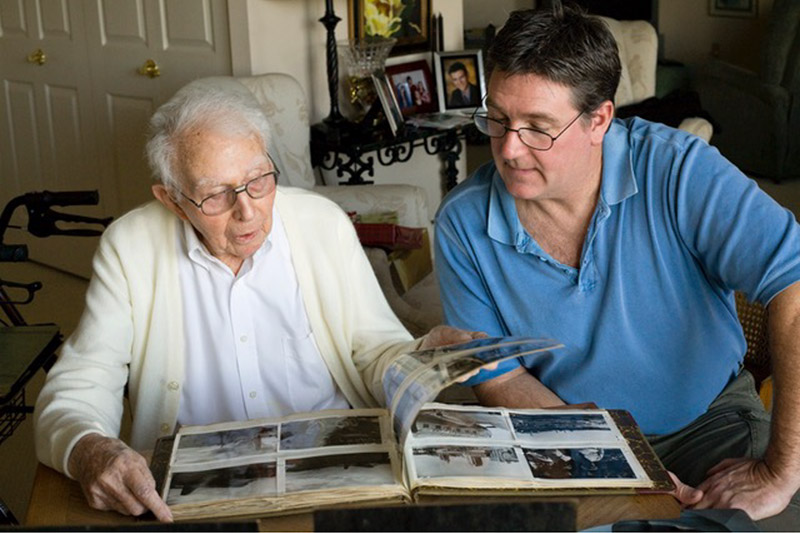
Paul going through his scrapbook photos with Jay Walls

Paul Wearly promotional shot with his Johnson KR
Featured Articles

